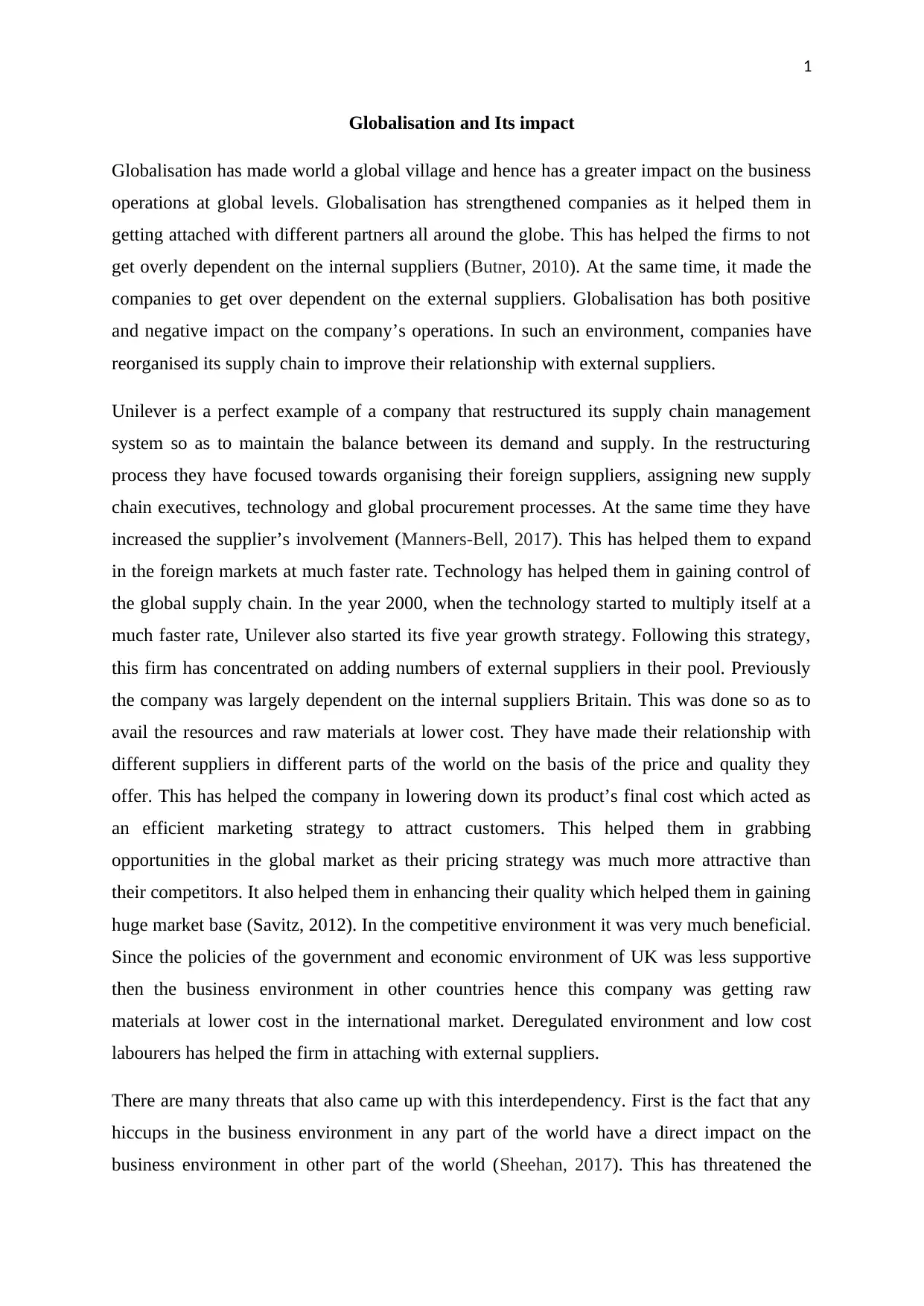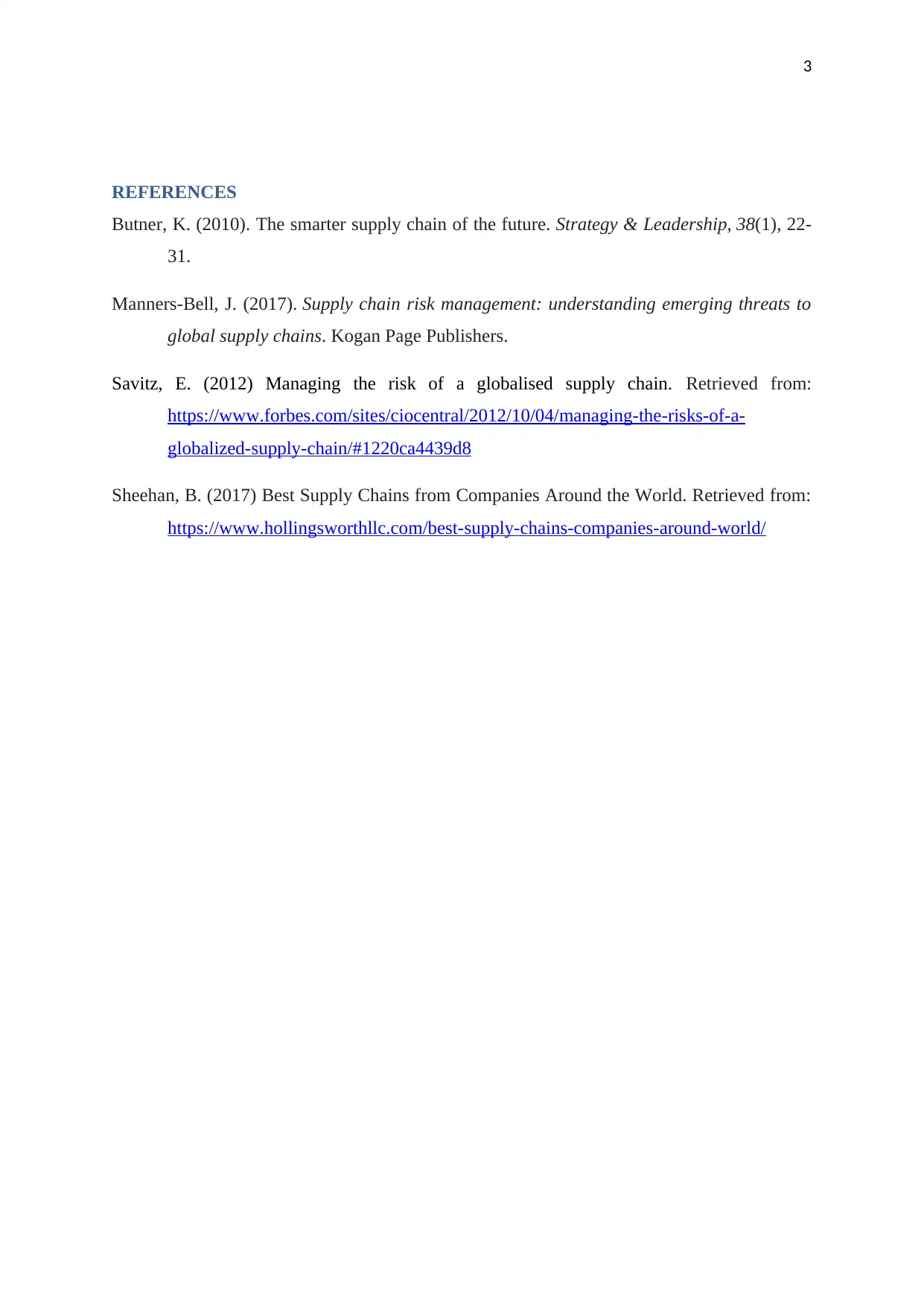International Marketing: Unilever's Globalisation Strategy Analysis
VerifiedAdded on 2023/01/19
|4
|677
|64
Report
AI Summary
This report analyzes the impact of globalisation on international marketing, emphasizing its effects on supply chain management and business operations. It highlights how globalisation has created a global marketplace, fostering interdependencies and reshaping company strategies. The report uses Unilever as a case study, demonstrating how the company restructured its supply chain to manage global demand and supplier relationships, leveraging technology and procurement processes to expand in foreign markets. The analysis also addresses the challenges of globalisation, such as the interconnectedness of business environments and the potential for disruptions due to political and economic factors. The report also examines the threats to local suppliers and the need for companies to balance global strategies with local demands.
1 out of 4








![[object Object]](/_next/static/media/star-bottom.7253800d.svg)